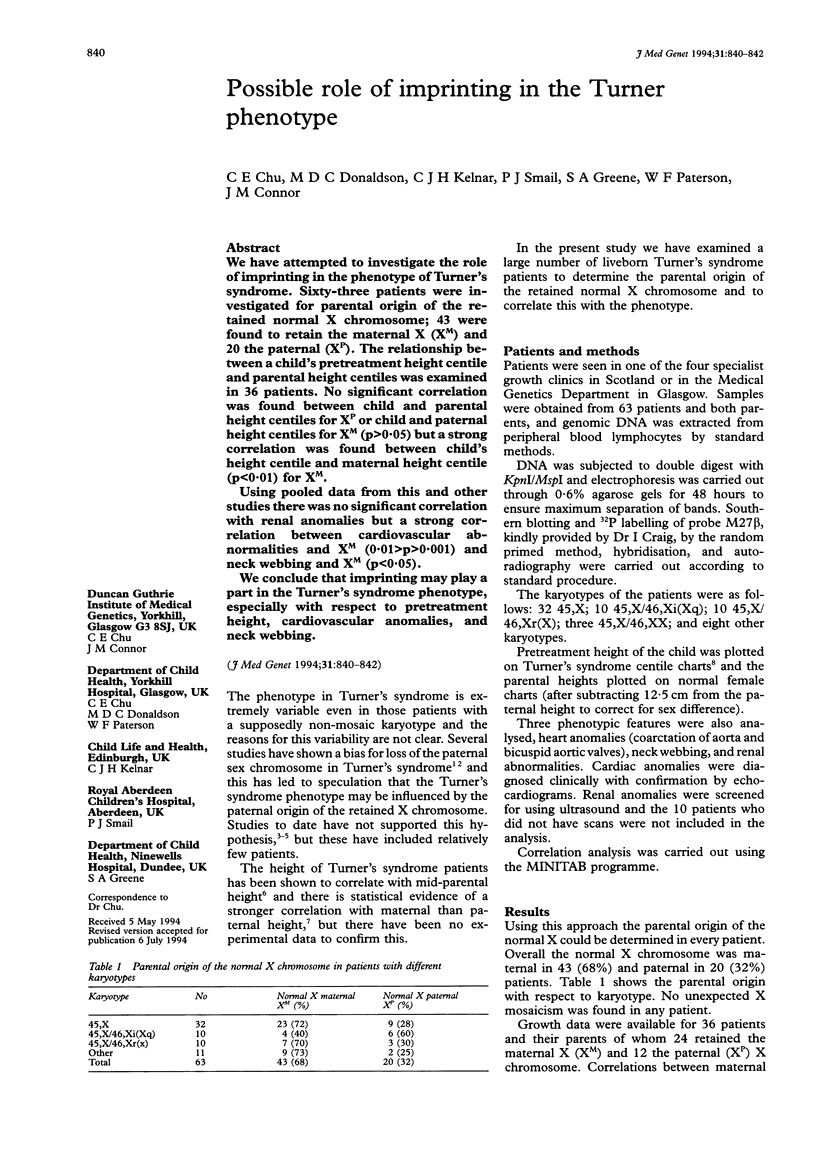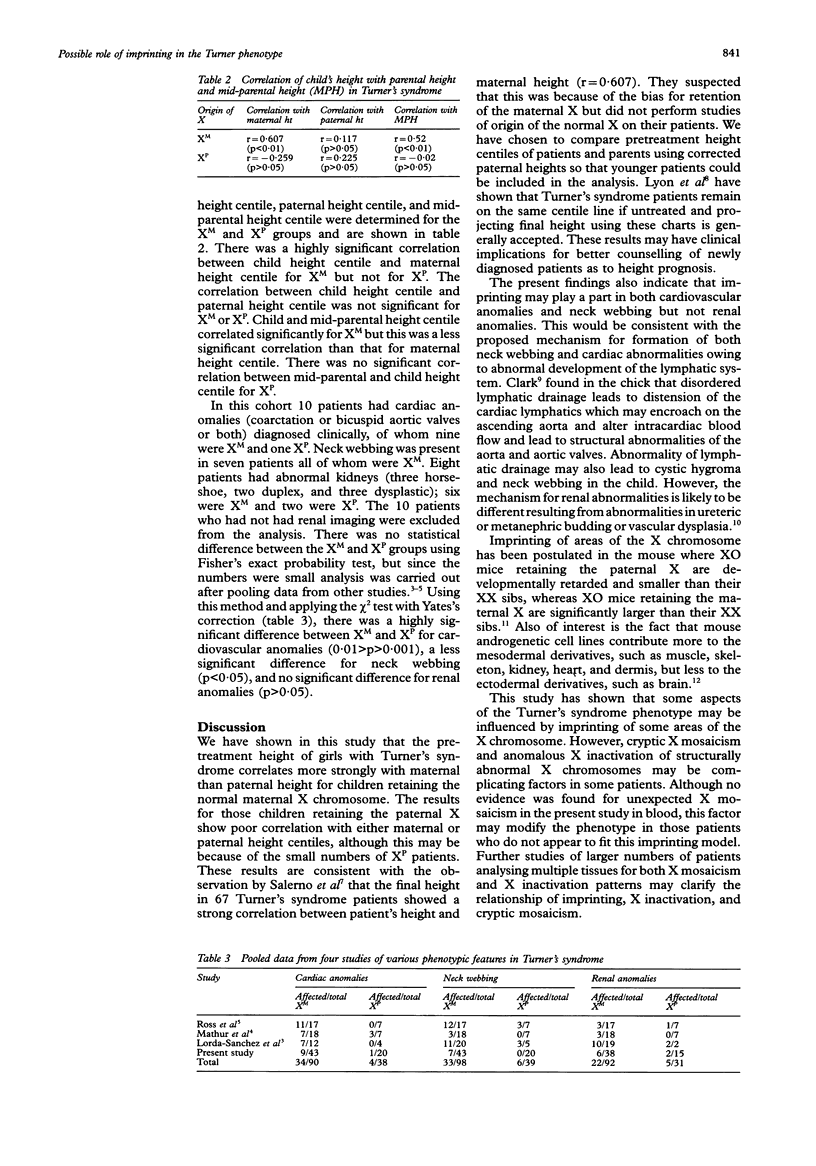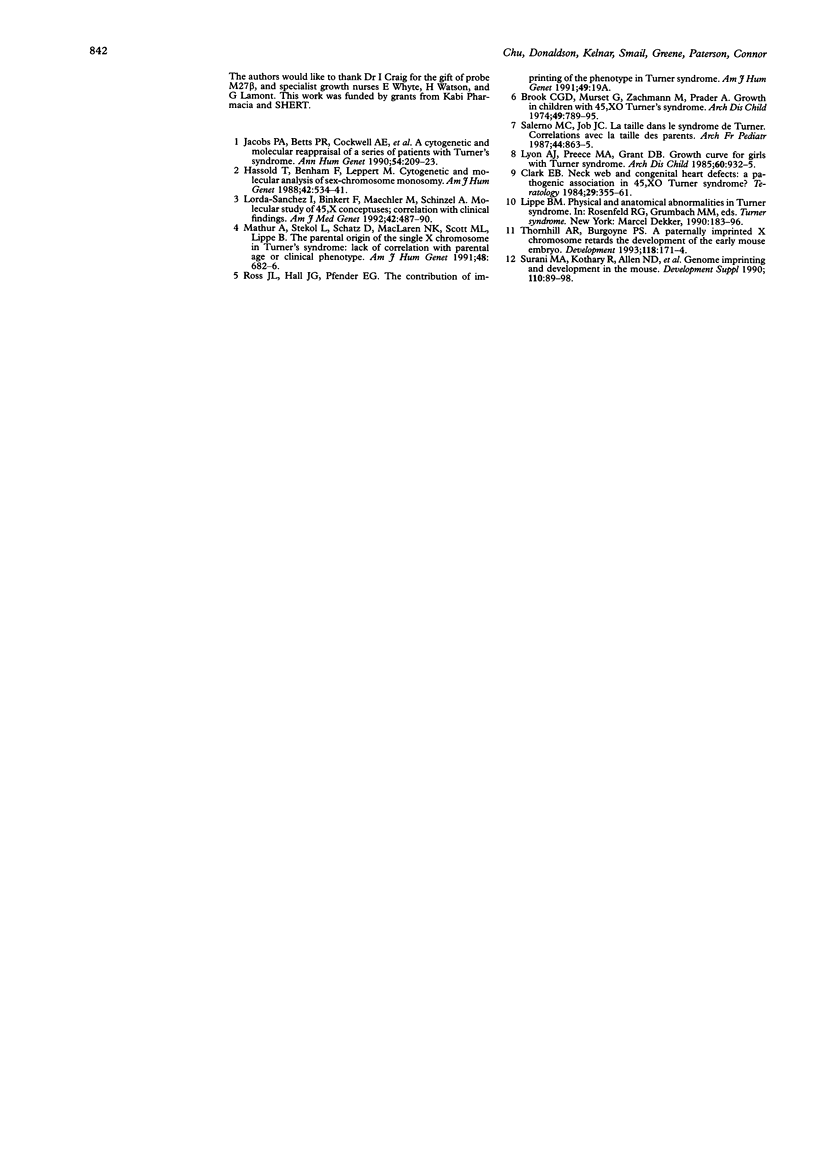Abstract
We have attempted to investigate the role of imprinting in the phenotype of Turner's syndrome. Sixty-three patients were investigated for parental origin of the retained normal X chromosome; 43 were found to retain the maternal X (XM) and 20 the paternal (XP). The relationship between a child's pretreatment height centile and parental height centiles was examined in 36 patients. No significant correlation was found between child and parental height centiles for XP or child and paternal height centiles for XM (p > 0.05) but a strong correlation was found between child's height centile and maternal height centile (p < 0.01) for XM. Using pooled data from this and other studies there was no significant correlation with renal anomalies but a strong correlation between cardiovascular abnormalities and XM (0.01 > p > 0.001) and neck webbing and XM (p < 0.05). We conclude that imprinting may play a part in the Turner's syndrome phenotype, especially with respect to pretreatment height, cardiovascular anomalies, and neck webbing.
Full text
PDF


Selected References
These references are in PubMed. This may not be the complete list of references from this article.
- Clark E. B. Neck web and congenital heart defects: a pathogenic association in 45 X-O Turner syndrome? Teratology. 1984 Jun;29(3):355–361. doi: 10.1002/tera.1420290305. [DOI] [PubMed] [Google Scholar]
- Hassold T., Benham F., Leppert M. Cytogenetic and molecular analysis of sex-chromosome monosomy. Am J Hum Genet. 1988 Apr;42(4):534–541. [PMC free article] [PubMed] [Google Scholar]
- Jacobs P. A., Betts P. R., Cockwell A. E., Crolla J. A., Mackenzie M. J., Robinson D. O., Youings S. A. A cytogenetic and molecular reappraisal of a series of patients with Turner's syndrome. Ann Hum Genet. 1990 Jul;54(Pt 3):209–223. doi: 10.1111/j.1469-1809.1990.tb00379.x. [DOI] [PubMed] [Google Scholar]
- Lorda-Sanchez I., Binkert F., Maechler M., Schinzel A. Molecular study of 45,X conceptuses: correlation with clinical findings. Am J Med Genet. 1992 Feb 15;42(4):487–490. doi: 10.1002/ajmg.1320420414. [DOI] [PubMed] [Google Scholar]
- Lyon A. J., Preece M. A., Grant D. B. Growth curve for girls with Turner syndrome. Arch Dis Child. 1985 Oct;60(10):932–935. doi: 10.1136/adc.60.10.932. [DOI] [PMC free article] [PubMed] [Google Scholar]
- Mathur A., Stekol L., Schatz D., MacLaren N. K., Scott M. L., Lippe B. The parental origin of the single X chromosome in Turner syndrome: lack of correlation with parental age or clinical phenotype. Am J Hum Genet. 1991 Apr;48(4):682–686. [PMC free article] [PubMed] [Google Scholar]
- Surani M. A., Kothary R., Allen N. D., Singh P. B., Fundele R., Ferguson-Smith A. C., Barton S. C. Genome imprinting and development in the mouse. Dev Suppl. 1990:89–98. [PubMed] [Google Scholar]
- Thornhill A. R., Burgoyne P. S. A paternally imprinted X chromosome retards the development of the early mouse embryo. Development. 1993 May;118(1):171–174. doi: 10.1242/dev.118.1.171. [DOI] [PubMed] [Google Scholar]


